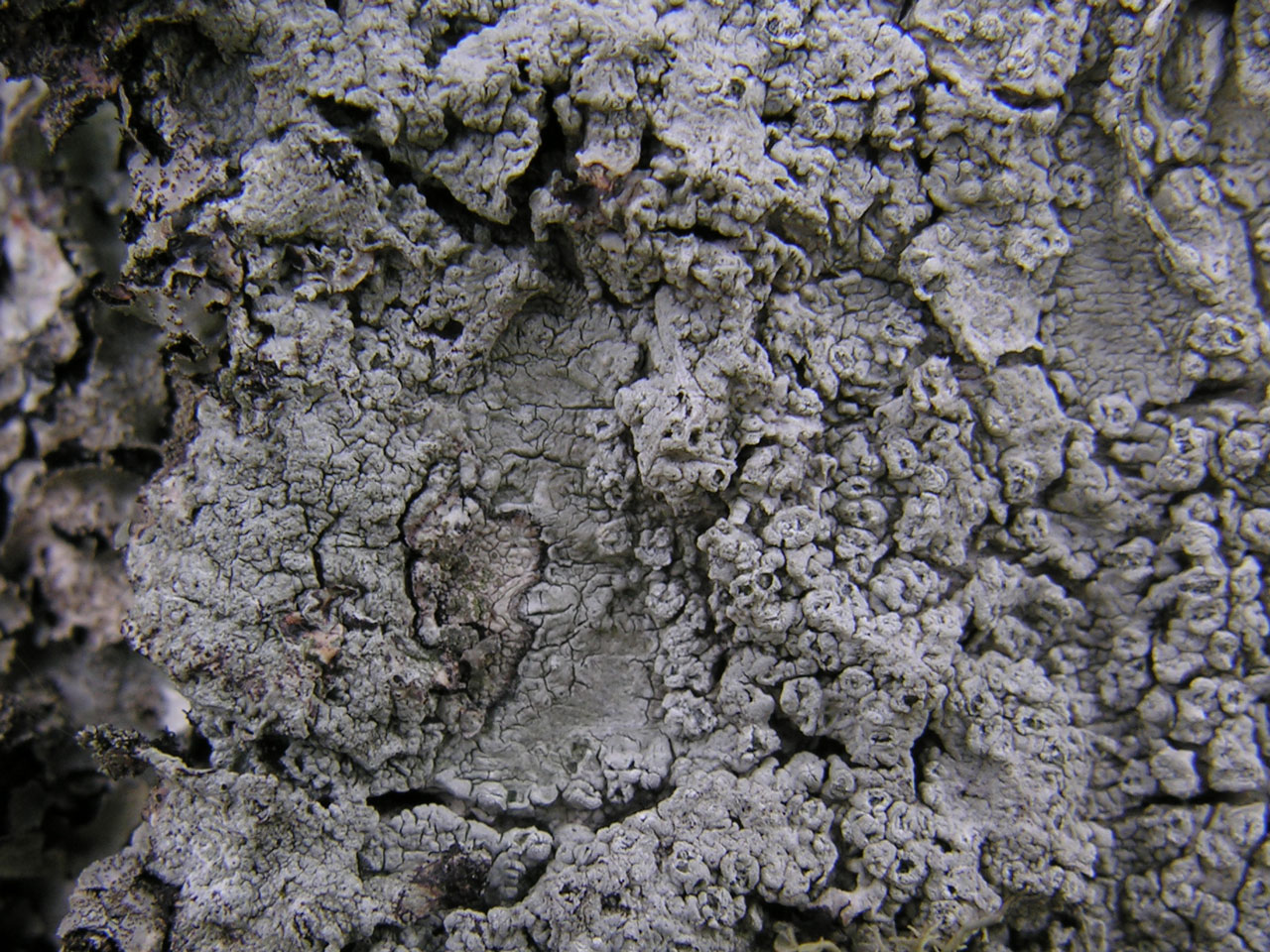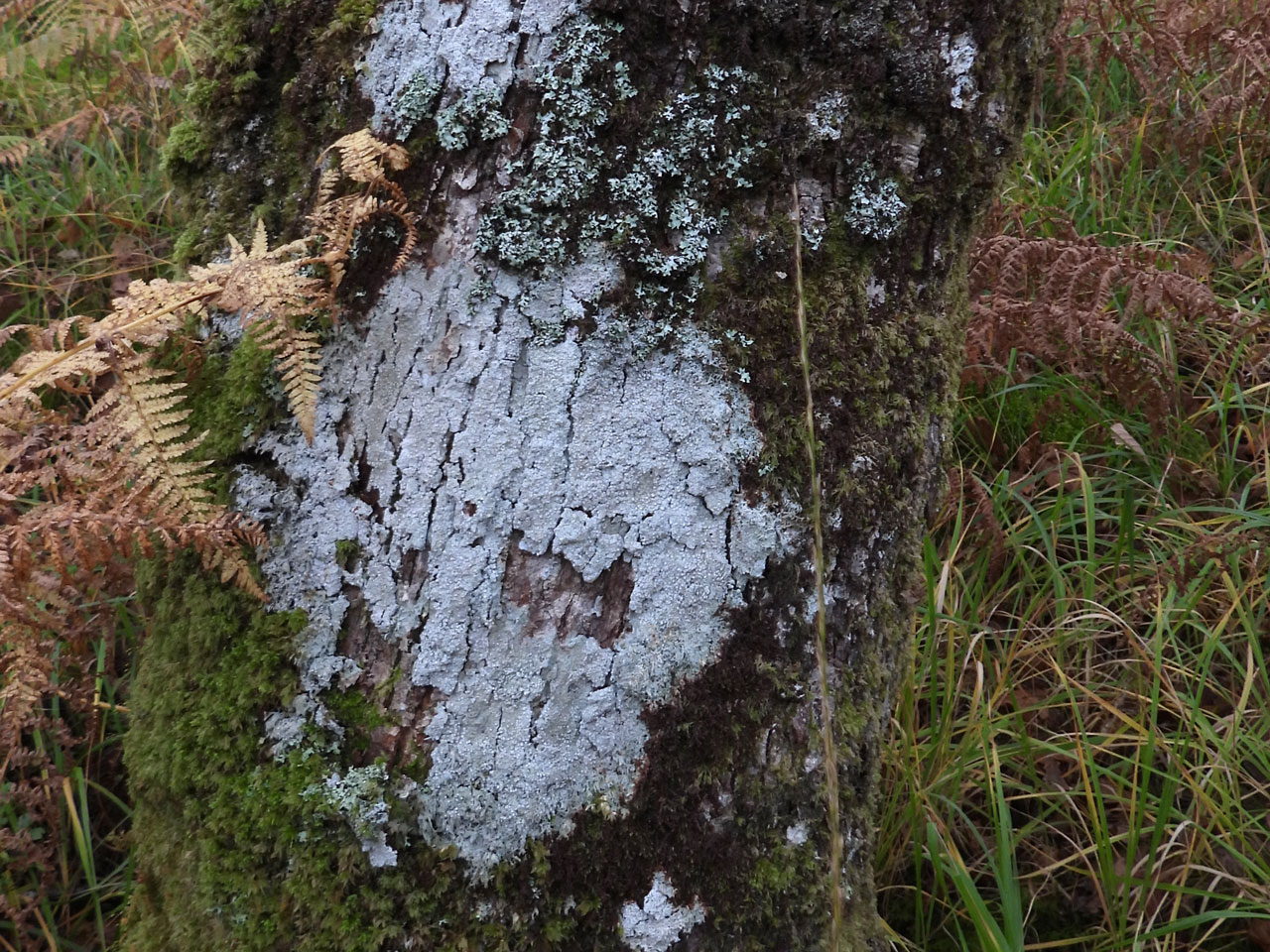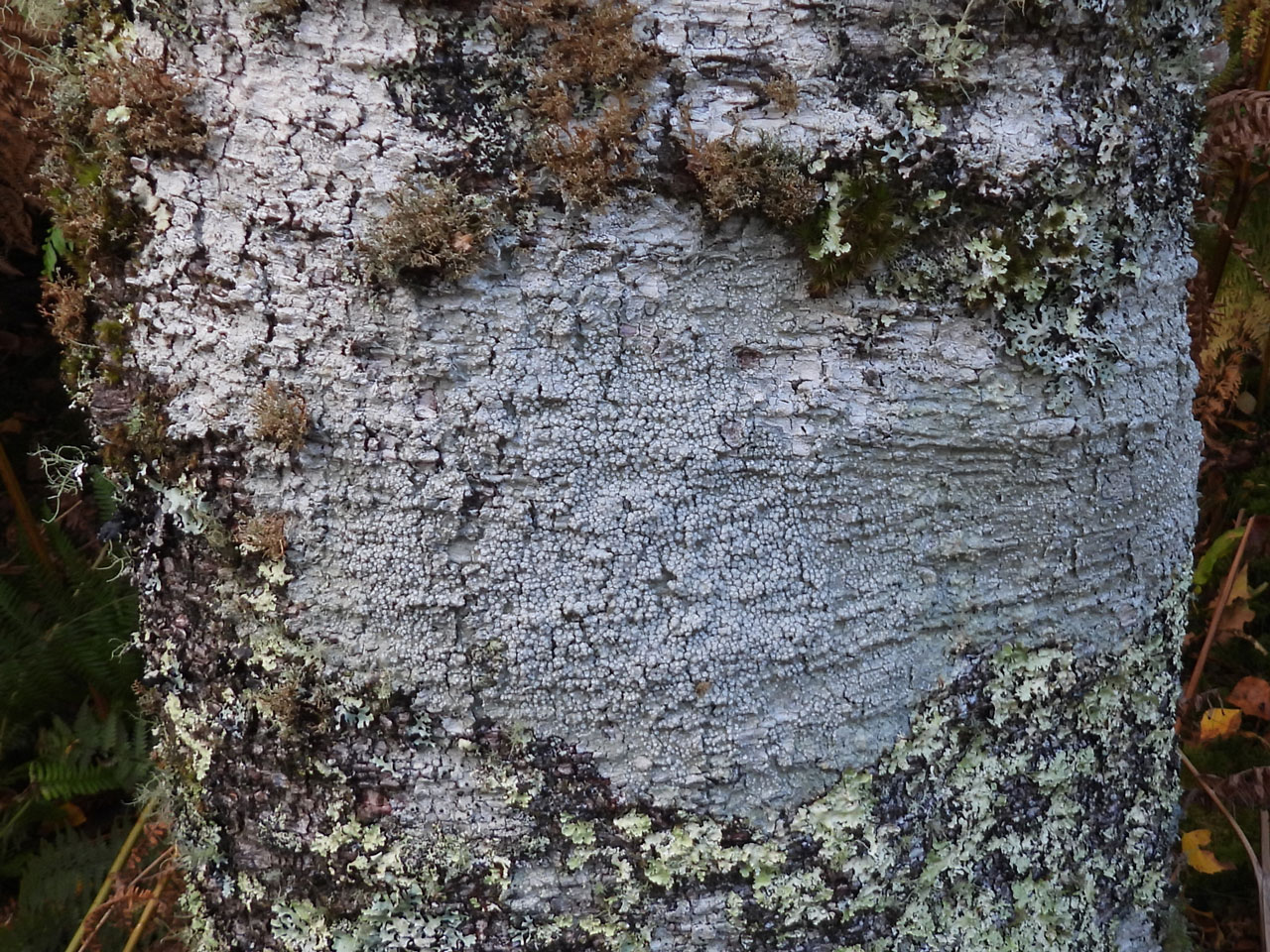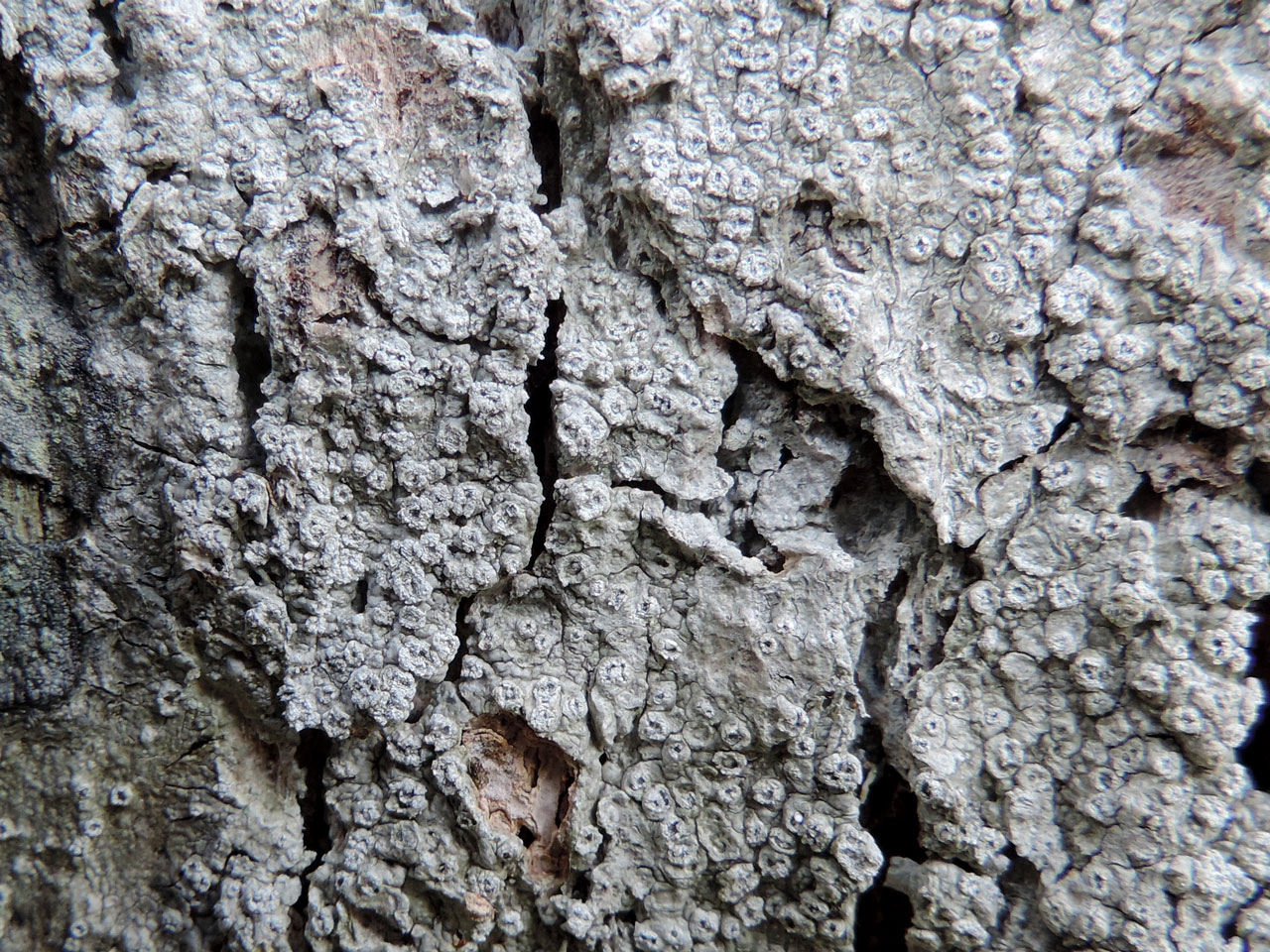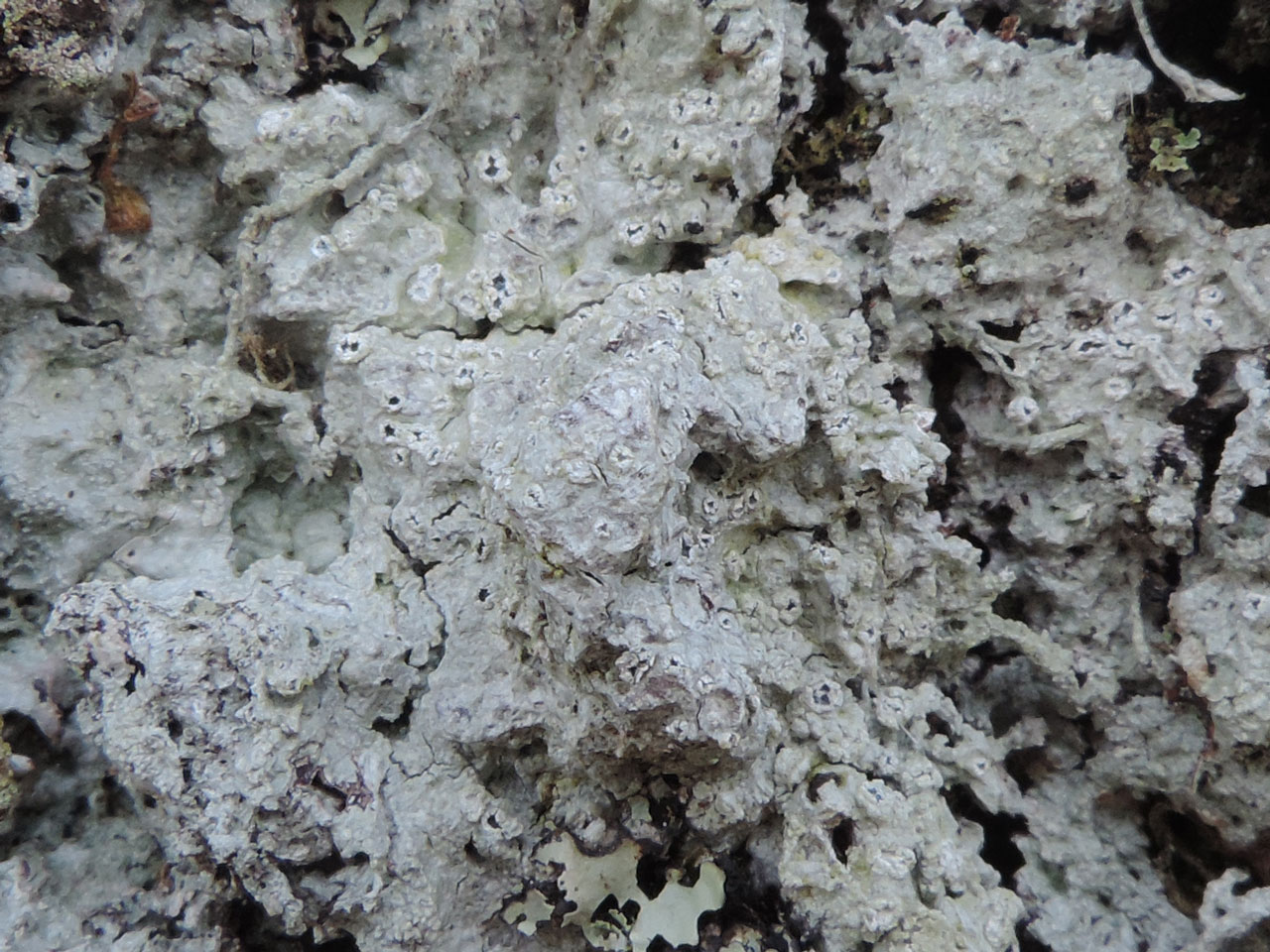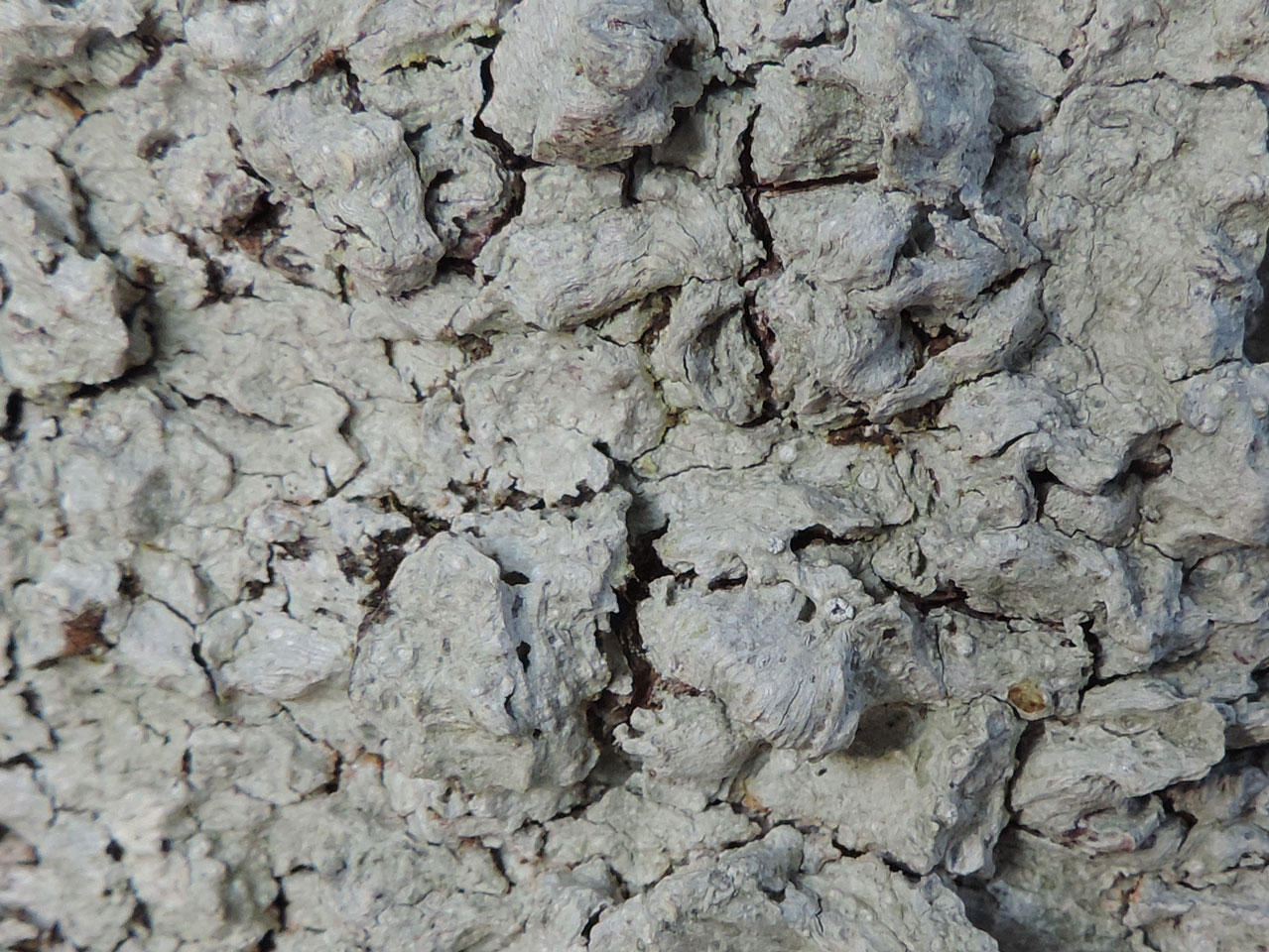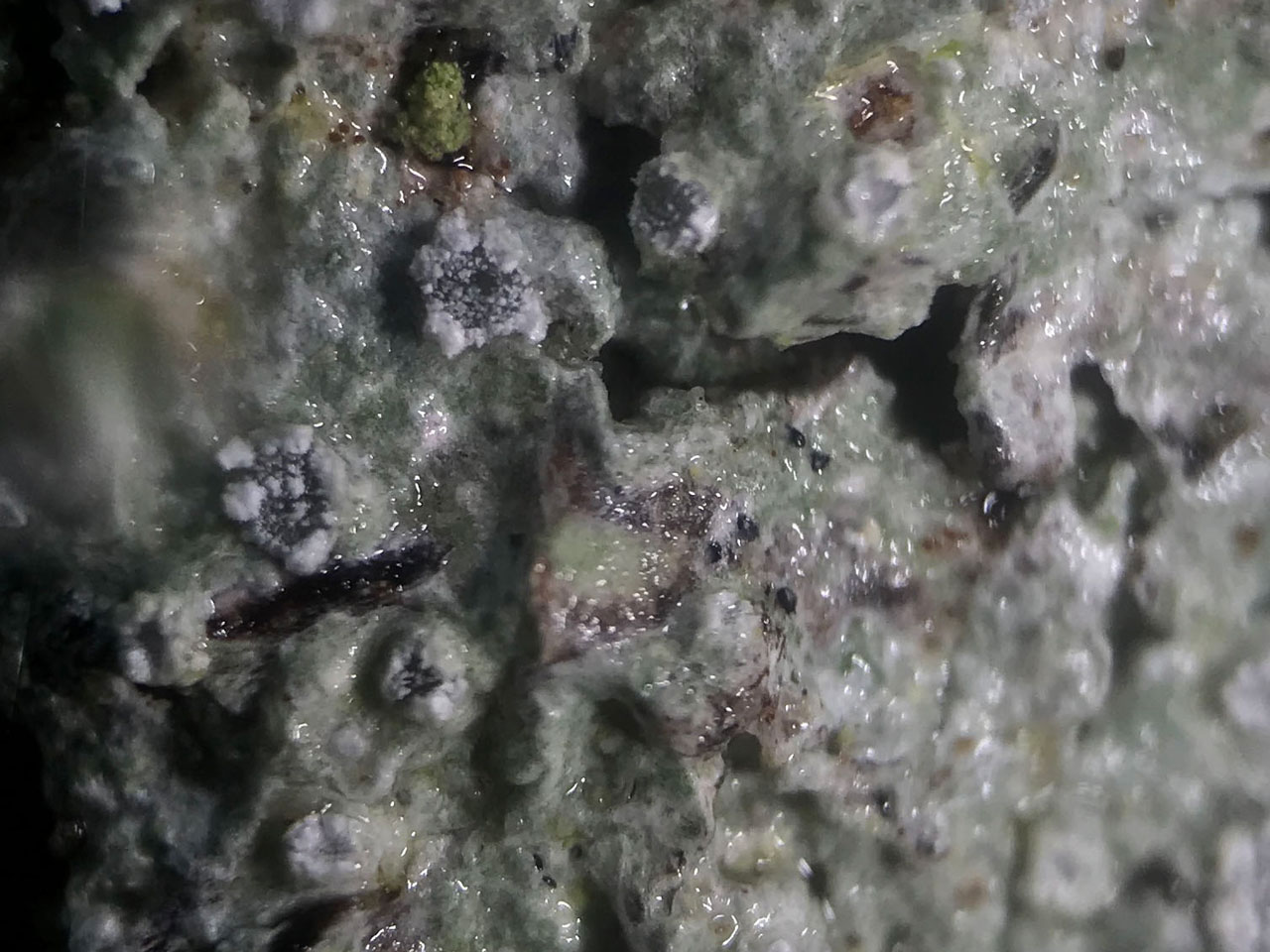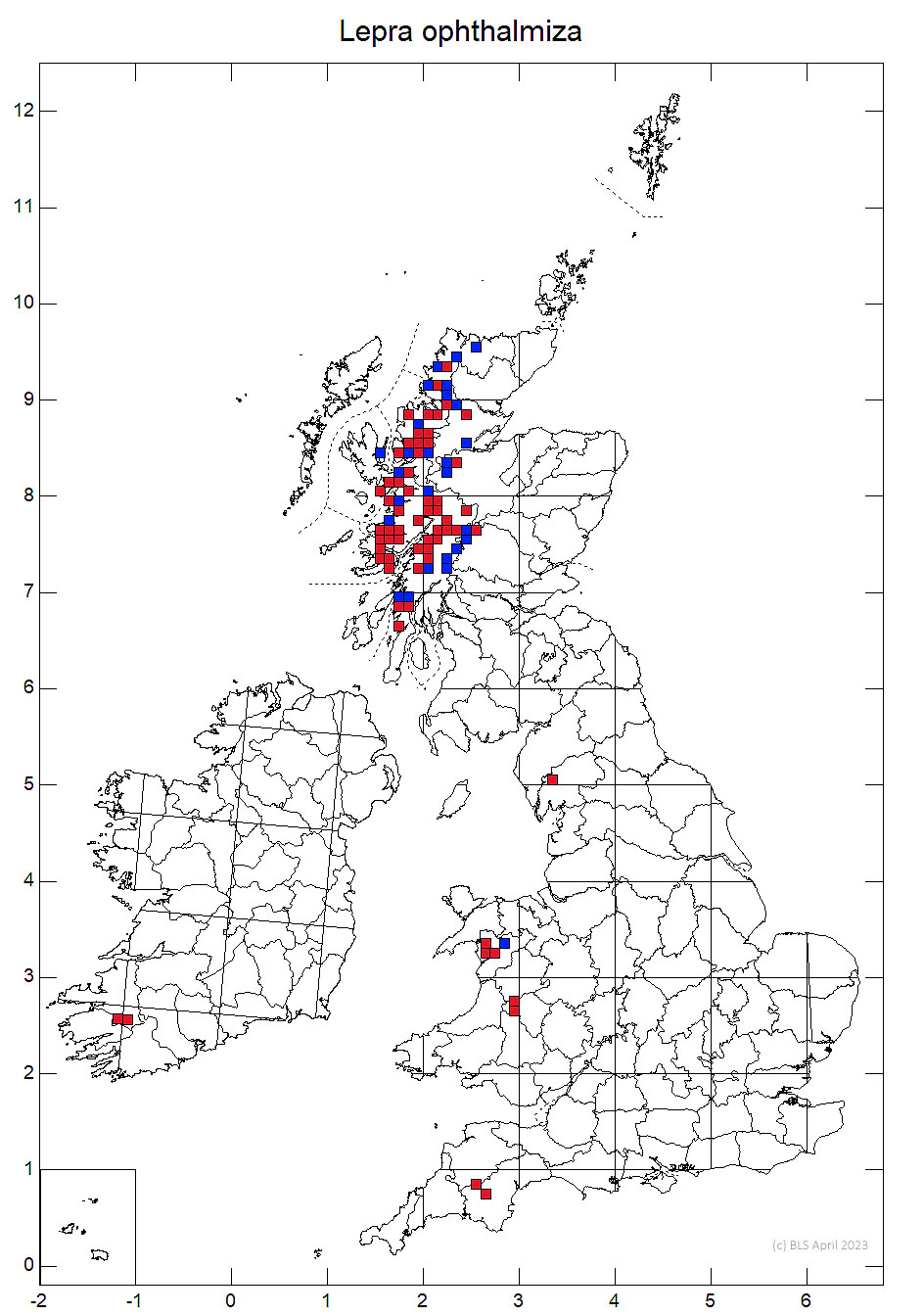Lepra ophthalmiza
A very localised lichen of acid bark in old growth temperate rainforests, widespread in the western Highlands and Inner Hebrides but rare beyond, where it is typical of relic higher altitude cloud forests. Similar to Lepra multipuncta but can be distinguished by the crenate margins of the soralia and developing apothecia and the absence of a slowly developing K+ chestnut brown to reddish brown spot test.
Like Lepra multipuncta, but thallus smooth to very uneven-warted; soralia 0.5–1.2 mm diam., with a ± raised irregular tumid segmented-crenulate margin, sparingly sorediate and torn on the inner side. Apothecia 1-2, sunken in soralia; disc partially obscured, ± greyish-pruinose; epihymenium K– or faintly purplish. Asci 1-spored. Ascospores (90–) 130–150 (–170) × (36–) 50–70 (–76) μm, ellipsoidal or cylindric-ellipsoidal, wall 6–7 μm thick. Thallus and soredia C–, K– or K+ reddish after some while, KC– or KC+ violet, Pd–, UV– (4 fatty acids).
Some morphs contain picrolichenic acid (as do L. amara and more problematically L. pulvinata) and then demonstrate a K+ reddish and KC+ violet reactions, but these may take some time to develop. The crenate margins of the soralia and developing apothecia are diagnostic, especially for the similar looking L. pulvinata. L. multipuncta can appear similar but has physodalic and ± protocetraric acids (Pd+ and K+ slowly chestnut brown to reddish brown) and the margins of the soralia and apothecia remain even and smooth. In the field the raised ascomata of L. ophthalmiza can resemble those of a diminutive Thelotrema.
The type of Pertusaria hutchinsiae (Borrer) Leight. (1851) has been re-examined and found to be assignable to L. ophthalmiza, but Cannon et al (2021) did not not feel it serves nomenclatural stability by replacing the name of a well-known species with one that has hardly been used.
On leached, acid bark and overgrowing mosses in humid rainforests, chiefly on Birch, Oak and conifers. Occurs in lower altitude woods on the coast of the western Highlands, but beyond this area it is a rare species of higher altitude old growth cloud forests. The type of the synonymous Pertusaria hutchinsiae was collected from rock in Ireland, but there appear to be no recent records from this habitat.

Local in the western Highlands and Inner Hebrides, rare N. & C. Wales (Meirionnydd, Radnor, Brecon), England (Dartmoor, Lake District). Very rare in Ireland (Co Kerry and Co Fermanagh).
A widespread species of high quality acid leached woods in the rainforests of the western Highlands and Inner Hebrides. Very rare beyond this area and confined to higher altitude cloud forests and it is likely to be a threatened species in Wales, England and Ireland. Its rarity in Ireland is in stark contrast to it frequency in the western Highlands. This a feature shared by other specialist lichens of leached bark in the temperate rainforests in Ireland and suggests that these species are even more dependant on the survival of large meta-sites than the assemblages of lichens found on base rich bark. The latter have survived more widely in Ireland's very fragmented relic temperate rainforests.
Britain: Notable, International Responsibility Species
Wales: Data Deficient
Scotland: Priority Taxon for Biodiversity in Scotland
Cannon, P., Kukwa, M., Coppins, B., Fletcher, A., Sanderson, N. & Simkin, J. (2021). Pertusariales: Ochrolechiaceae, including the genera Lepra, Ochrolechia and Varicellaria. Revisions of British and Irish Lichens 5: 1-17. Link
Text by Neil A Sanderson based on Cannon et al (2021)
